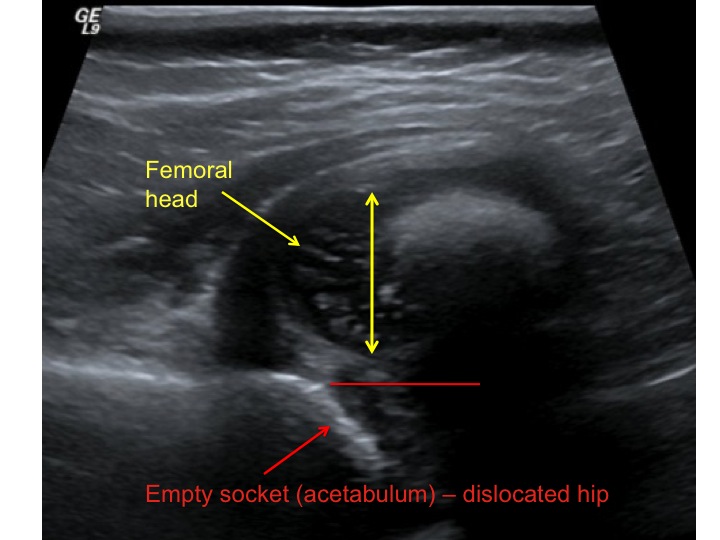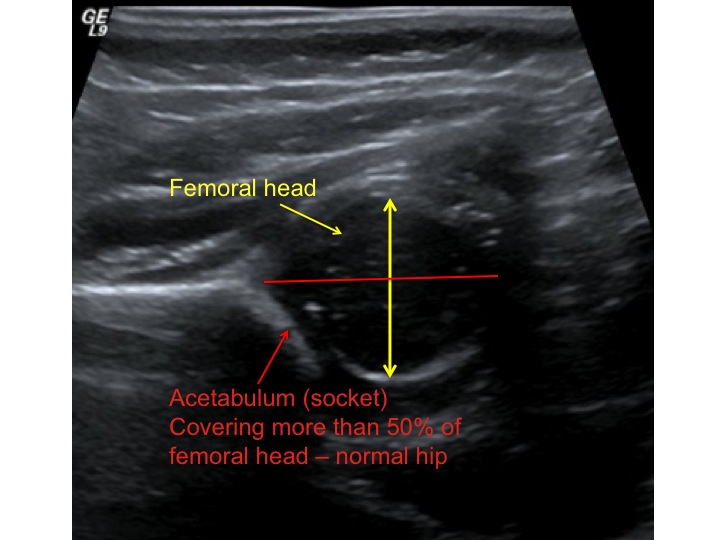
Diagnosis


All babies have a hip examination at the time of birth before they leave hospital and again at 6-8 months by the health visitor. Unfortunately these tests are not very accurate. This is in part because doctors performing the tests generally have little experience of DDH. However, it is accepted that even trained consultants can miss this condition.
The most accurate means of detecting DDH in the first 6 months of life (and safest) is to perform an ultrasound scan (image above). In the National Health Service in England ultrasound is usually reserved for those babies who have certain risk factors or abnormalities on clinical examination.
Once a child with a dislocated hip starts to walk a limp will probably be noticed. There may be a slight reduction in the movement in the joint which most recognisable when parents are changing nappies. The condition is not painful in babies and infants. It does not delay the age at which babies start to walk.
Babies and children who have shallow but not dislocated hips will often have a normal examination until they develop symptoms in adolescence and adult life. Patients will then complain of pain around the lateral aspect of the hip and the groin particularly on activity.
After the age of 6 months a plain X ray will be able to reliably detect the abnormality.
